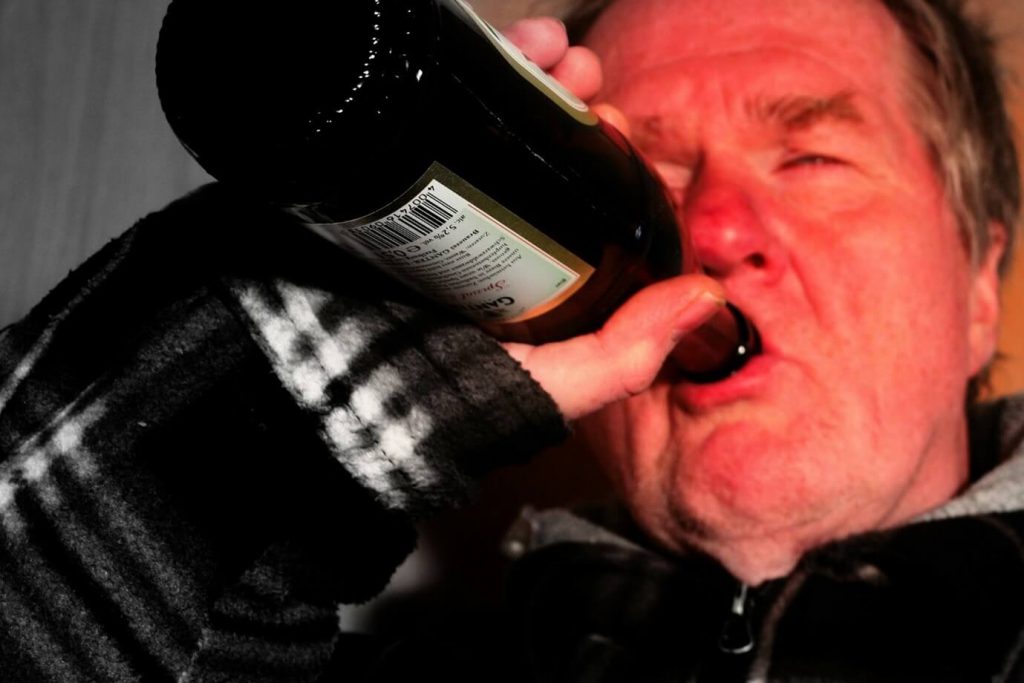Just like alcohol abuse negatively impacts the abuser’s social, physical, and mental health, it also affects those surrounding them. More often than not, alcoholic victims may not realize that their loved ones are negatively affected by their disorder.
New research from the Journal of Studies on Alcohol and Drugs shows that 1 in every 5 Americans experiences the second-hand effects of alcohol.
Additionally, in a study involving 9,000 adult participants, 21% of the women and 23% of the men reported having experienced second-hand drinking effects in the past 12 months.
However, their experiences were rather different as men often reported cases of physical aggression and vandalism while women complained of financial troubles and relationship distress.
What is second-hand drinking?
Second-hand drinking refers to the negative effects experienced by people around victims of alcohol abuse disorder.
These effects may linger in their day-to-day lives if they are constantly around alcoholics or they may be a one-time incident that can change an individual’s mental state, such as assault.
Common second-hand effects of alcohol include:
1. Violence and Harassment
Alcohol vastly affects emotional responses. Although the response might be distinct for each individual, it can easily provoke physical aggression and anger, especially for someone who is easily irritable.
Research shows that 40% of all violent crimes today are attributable to alcohol misuse. The scientific reason behind this is that heavy drinking weakens the brain’s functionality to prevent impulsivity. However, past research has also linked alcohol-related impulsive behavior to genetics.
Consequently, people around alcoholics often fall victims to impulsive behavior such as domestic violence, aggression, and harassment.
It is not uncommon to witness a drunkard harassing people on the sidewalk. Women are more likely to experience mistreatment or harassment from regular alcohol abusers compared to their male counterparts.
According to the World Health Organization (WHO), about 55% of domestic violence perpetrators are usually intoxicated with alcohol.
2. Assault
Verbal, aggravated, simple, and sexual assaults are some of the most common second-hand effects of alcohol.
Alcoholism is one of the major risk factors that contribute to sexual assault. Alcohol abuse and sexual violence co-occur.
Research done by college students in the US indicates that at least 50% of sexual assaults almost always involve alcohol abuse.
Well, alcohol may not be a causative factor on its own as there are individuals who drink responsibly without assaulting anyone. However, its consumption may aggravate an offender’s perception and make their ill traits more pronounced.
Statistics reveal that it is common for men who are heavy drinkers to misperceive the friendliness of their female counterparts as sexual desire which often is the cause of most rape cases.
3. Vandalism
Vandalism and property damage is a second-hand effects of alcohol perpetrated mostly by men. Alcohol often leads to impulsivity which can make one take out their frustration on nearby objects.
It can also make an individual a nuisance to those around them. The urge to drink and vent out is a common experience for active alcohol users. This condition can only be relieved when the alcohol brain recovery timeline kicks in.
4. Accidents
Excessive drinking not only causes impaired thinking but also improper mind and muscle coordination and visual impairment.
As one gets intoxicated with alcohol, the central nervous system becomes compromised as the Blood Alcohol Concentration (BAC) increases.
A BAC level above 0.15% is enough to cause visual impairment and cause visible signs of alcohol intoxication.
According to National Highway Traffic Safety Administration, 2020 witnessed 11-654 deaths caused by alcohol-impaired driving. Statistics also show that one person dies due to drunk driving every 45 minutes in the United States.
With such high stats, the NTSB recommended that a BAC limit of 0.05% or lower be set for all drivers to reduce drunk driving. Check out one of our articles to learn more about your safe limits.
5. Financial crisis
Alcohol is downright expensive. Excessive drinking can lead to financial distress, especially for individuals coming from low-income families.
Alcohol dependency routinely leads to poor financial decisions as most addicts would neglect other responsibilities in favor of satisfying their addiction.
Some would go to an extent of stealing money or acquiring uncollectible loans to buy alcohol.
This often leads to increasing debts and unpaid bills, unemployment, and at times even homelessness.

6. Bad relationships
Close friends and family members of alcoholics may slowly begin distancing themselves due to bad behavior and neglect. Coworkers may complain of low productivity and harassment at the place of work.
Couples, where one partner suffers from alcohol addiction, may often have to deal with relationship dissatisfaction, codependency, infidelity, and detachment. Such marriages hardly survive and oftentimes end up in divorce.
7. Increased risk for suicide
Studies show that depression and alcohol abuse are the most common predisposing factors to suicidal behavior.
Alcohol may be abused for several reasons; it might be to deal with past traumatic experiences, eliminate anxiety, use it as a cover-up for personality disorders, or at times, one may drink to forget their problems.
Whatever the reason, many people tend to self-medicate using alcohol which may eventually develop into a full-blown addiction.
While the initial goal was to alleviate stress, alcohol only results in temporary relief after which the problem is made more pronounced.
Depression and alcohol dependency are mostly accompanied by antisocial behavior, and thus make a perfect recipe for self-sabotage or potential suicide.
Such cases are mostly experienced by the youth who fall victims to mental health disorders such as borderline personality disorder or bipolar disorder.
How to alleviate secondhand effects of alcohol
As demonstrated above, alcoholism is not a personal problem. It is no longer the addict’s problem but our problem as a whole. Therefore, it is our duty as a community to take care of our own.
If you can call your drunk friend an Uber instead of letting them drive home by themselves you can potentially prevent a traffic accident. You may also opt to drive them home yourself.
Additionally, recommending an alcoholic around you to an AA meeting may set them on the path to healing. Alternatively, you can send your loved one to a rehabilitation center for proper treatment and save a life.
An online support group or mandatory coaching every other day could also free your loved one from alcohol dependency.
Although such decisions might be a tough call, they are of paramount importance and will ultimately eliminate the negative effects caused by second-hand drinking.


